
Eli Whalley founded his business at Ashton-under-Lyne during the 1890s and his premises were beside the Ashton Canal at Whitelands where it makes a head-on junction with the Huddersfield Narrow Canal. He occupied a comparatively small area of land at the end of Ashton Old Wharf and for many years this was known as Eli Whalley's Wharf and nowadays it is known as Donkey Stone Wharf.
This company became well known for its manufacture of donkey stones, which were produced in huge quantities to meet the demand for the mainly northern tradition of donkey-stoning stone steps, windowsills and the area of pavement outside (known as the 'flags' or 'front'). Donkey stones were about the size of a large bar of soap and when being used they needed to be wetted as they were scoured over stone surfaces. This was a regular chore performed by generations of housewives at the terraced houses of Lancashire and Yorkshire. A proud housewife never neglected this duty, as it was a public demonstration of the cleanliness of her home. As the stone surfaces dried, they took on the colour of the stone used in the manufacture of that particular donkey stone. The result was entirely decorative, as the finish was not long lasting.
It seems that there may have been more than one 'recipe' for the composition of these stones and it is known that some of the stone used in their manufacture was quarried at both Wigan and Northampton and these would have been sandstones. Another 'recipe' contained limestone that was quarried around Dove Holes in Derbyshire and this would have been supplied via the Peak Forest Tramway and Canal. Colours ranged from brown, through cream, to white with intermediate colours being made by mixing different coloured stones.
The quarried stone was first ground in a stone mill to which water was added to make a slip. Next, cement and a bleaching agent were added to form a paste. This was then pressed into oblong moulds after which it was cut into individual bars and allowed to set.
Donkey stones cost about ½d each to buy but more often than not they were exchanged for old rags and bones whenever the Rag and Bone Man passed down the street calling out in a very loud voice for rags and bones. The number of stones given depended entirely on his assessment of the quantity and quality of whatever was being offered. If he considered them reasonable, then he would give more stones.
Donkey stones took their name from the image of a donkey used by the largest 19th century manufacturer, Edward Read & Son of Manchester. On the other hand, Eli Whalley used a lion as his trademark and the inspiration for this came from childhood visits to Belle Vue Zoo at Gorton, Manchester.
Eli Whalley's company reached its peak during the 1930s when it was producing around 2.5 million donkey stones every year. By 1973 the owners of the company were Gilbert Garside and his son, Harry, but, by this time, production had shrunk to about 720,000 stones a year. However, it outlived all other manufacturers to become the world's last surviving donkey stone manufacturer and Eli Whalley & Company remained in business until 1979.
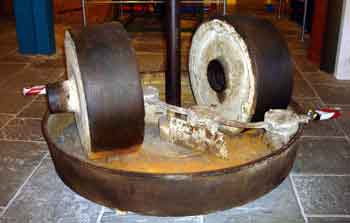 |
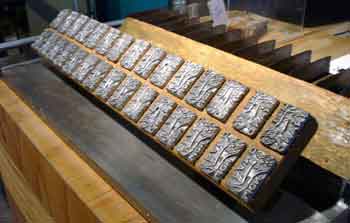 |
The mill used by Eli Whalley to grind the stone used in the manufacture of donkey stones, Feb 2006. This mill is now exhibited at Portland Basin Museum. |
A set of 30 moulds used to impress Eli Whalley's lion brand trademark onto donkey stones, Feb 2006. These moulds are now exhibited at Portland Basin Museum. |
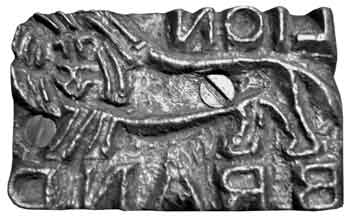 |
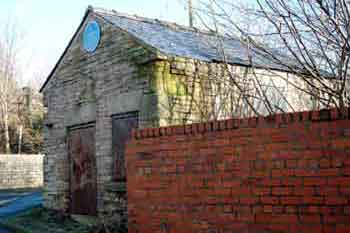 |
| Detail of one of Eli Whalley's donkey stone moulds showing the lion brand trademark, Feb 2006. | Eli Whalley's bothy on Donkey Stone Wharf, with Lower Wharf Street in the background, Feb 2007. Note the blue plaque on the gable. |
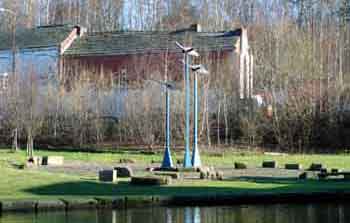 |
Donkey Stone Wharf (formerly Ashton Old Wharf) at the terminus of the Ashton Canal, Feb 2007. This wharf is located on the corner of Whitelands and Lower Wharf Street. The area was landscaped by Trevor Bridge Associates Ltd of St Michael's Square, Ashton-under-Lyne. The sculpture, 'Flying Geese Wind Vanes' is by Paul Margetts of Forging Ahead and it stands 5.5m tall. In May 2011 it was observed that Donkey Stone Wharf had been dug up by large civil engineering works and that the sculpture had been removed to facilitate this. |
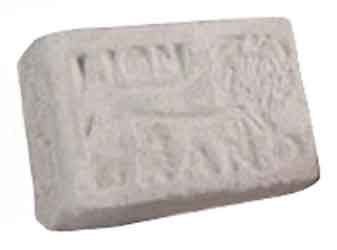 |
Lion brand donkey stone manufactured by Eli Whalley of Ashton Old Wharf, Ashton-under-Lyne. |
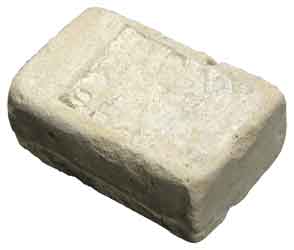 |
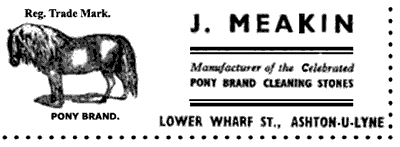 |
| Pony brand donkey stone. | Advertisement of J Meakin of Lower Wharf Street, Ashton-under-Lyne, showing the pony registered trademark for pony brand donkey stones. |
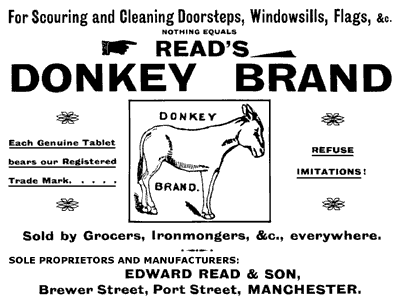 |
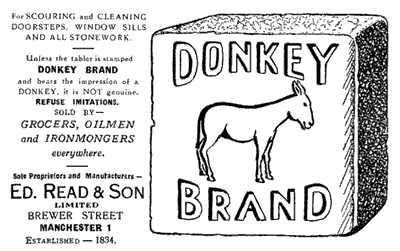 |
| Advertisement of Edward Read & Son of Ancoats, Manchester, showing the original donkey registered trademark for donkey stones. | Advertisement of Edward Read & Son. |
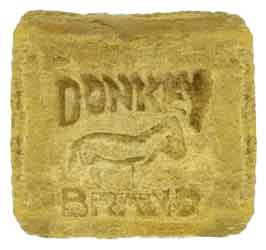 |
Donkey brand donkey stone manufactured by Edward Read & Son. |
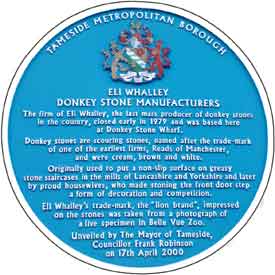
Acknowledgement
Portland Basin Museum.